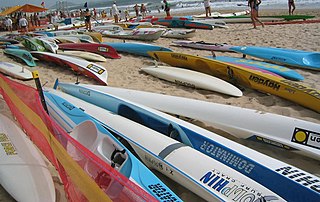
Surf lifesaving is a multifaceted social movement that comprises key aspects of voluntary lifeguard services and competitive surf sport. Originating in early 20th century Australia, the movement has expanded globally to other countries, including New Zealand, Ireland, South Africa, and the United Kingdom. Surf lifesavers in Australia are colloquially known as "Clubbies".

The MBB/Kawasaki BK 117 is a twin-engined light utility–transport helicopter. It was jointly developed and manufactured by Messerschmitt-Bölkow-Blohm (MBB) of Germany and Kawasaki of Japan. MBB was later purchased by Daimler-Benz and eventually became a part of Eurocopter, which was later rebranded as Airbus Helicopters.

Piha is a coastal settlement in West Auckland, on the western coast of the Auckland Region in New Zealand. It is one of the most popular beaches in the area and a major day-trip destination for Aucklanders throughout the year, and especially in summer.
Surf Life Saving Northern Region is the largest of four regions that make up Surf Life Saving New Zealand. As of the 2021/2022 season, it is made up of 18 clubs that look after 22 patrol locations from Ahipara to Raglan on the West Coast and from Whangārei Heads to Takapuna on the East Coast.
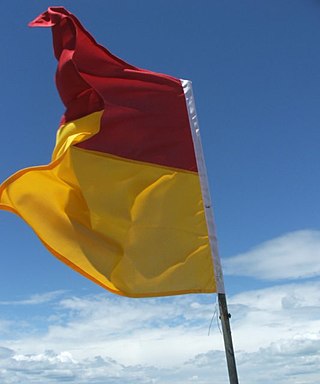
Surf Life Saving New Zealand (SLSNZ) is the national association representing 74 Surf Life Saving Clubs in New Zealand. The organisation's motto is 'In it for Life'. This refers to both the long relationship many members have with the organisation, as well as to the organisation's purpose of preventing drowning and injury, thereby saving lives.

The Northland Emergency Services Trust (NEST) is an emergency air rescue service in Whangārei, New Zealand. The Trust is supported by contributions from local sponsors, individuals, families, businesses and organisations. The operator, Northern Rescue Helicopter Ltd. (NRHL), is a joint venture between Northland Emergency Services Trust and Auckland Rescue Helicopter Trust.
Chopper Squad is an Australian television series produced by the Reg Grundy Organisation for the 0-10 Network.

Piha Surf Life Saving Club is a surf lifesaving club for the southern section of Piha, on the west coast of Auckland, New Zealand, some 45 km from the Auckland City centre. The patrol was featured in the TVNZ reality show Piha Rescue.

The Shock Trauma Air Rescue Service is a Canadian non-profit helicopter air ambulance organization funded by individual donors, service groups, corporate donors and government contributions. STARS provides rapid and specialized emergency care and transportation for critically ill and injured patients. STARS operates from bases in Calgary, Edmonton, Grande Prairie, Regina, Saskatoon, Winnipeg and formerly Halifax.
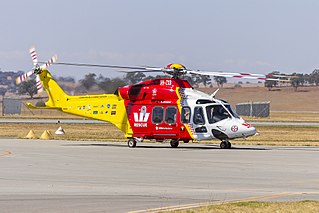
The Westpac Lifesaver Rescue Helicopter Service is a helicopter surf lifesaving service that operates in Australia.

The Cronulla District LifeSaver Rescue Service works with the Water Police, NSW Police, NSW Maritime, Coast Guard, PolAir Helicopters, Westpac Life Saver Rescue Helicopters, Bate Bay Surf Life Saving Clubs as well as clubs in the Royal National Park, and CareFlight helicopters in providing rescue and emergency medical care to the people on Sydney's waterways.

Surf Life Saving Australia (SLSA) is an Australian not-for-profit community organisation that promotes water safety and provides surf rescue services.
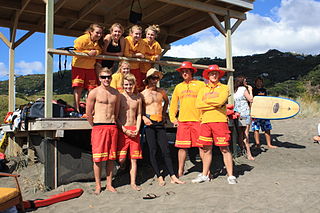
Piha Rescue is a New Zealand reality series following the daily actions of the Piha Surf Life Saving Club lifeguards on Piha surf beach, one of the country's most popular beaches. Piha is one of the many beaches located on the North Island West Coast near Auckland.
A rescue lifeboat is a boat rescue craft which is used to attend a vessel in distress, or its survivors, to rescue crew and passengers. It can be hand pulled, sail powered or powered by an engine. Lifeboats may be rigid, inflatable or rigid-inflatable combination-hulled vessels.

The Otago Rescue Helicopter trust is an emergency helicopter service covering the lower South Island area of New Zealand, used for accident and medical air ambulance missions, and search and rescue. As of 2009, the service operates a MBB/Kawasaki BK 117 B-2 helicopter, with two other BK 117s as backup to the primary rescue helicopter. It is run by a charitable trust formed in 1998, with major sponsor the Otago Regional Council. Based at Taieri Aerodrome near Mosgiel, it covers 25 percent of the country's land area. Retrieval missions typically transport patients to Dunedin Hospital, and the service works in cooperation with New Zealand's main ambulance provider, St John New Zealand. Around 400 missions and 600 flying hours are undertaken each year.
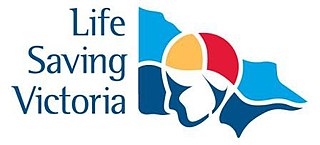
Life Saving Victoria is an Australian life saving organisation formed in 2002 from a merger of the Victorian Branch of the Royal Life Saving Society Australia and Surf Life Saving Victoria. Life Saving Victoria works to prevent drownings and other water related deaths and injuries in Victoria. Life Saving Victoria teaches local communities in Victoria about water safety, swimming and resuscitation. It also provides surf life saving services and patrols for beaches across the state. Life Saving Victoria is an emergency support agency to Victoria Police for water based emergencies.

Karioitahi Beach is a black sand beach located in the southwest of the Auckland region, on the west coast of New Zealand's North Island. The nearest major town is Waiuku, about 8 km inland.
Mark Trevor "Horse" Bourneville is a New Zealand former professional rugby league footballer. He represented both New Zealand and France in international rugby league and is the only dual-international the two countries share.
Essex & Herts Air Ambulance Trust (EHAAT) is a charity air ambulance service providing a free, life-saving Helicopter Emergency Medical Service (HEMS) for the critically ill and injured of Essex, Hertfordshire and surrounding areas.

Life Flight, or Life Flight Trust, is a charitable trust providing an emergency air ambulance and rescue helicopter service that operates out of Wellington, New Zealand. Their services include the Wellington-based BK117 Westpac Rescue Helicopter, as well as two nationwide J32 Jetstream air ambulance planes that transport patients who are critically ill and in need of hospital transfer for specialist care. The majority of patients are from the central or lower North Island, or the upper South Island of New Zealand.


















